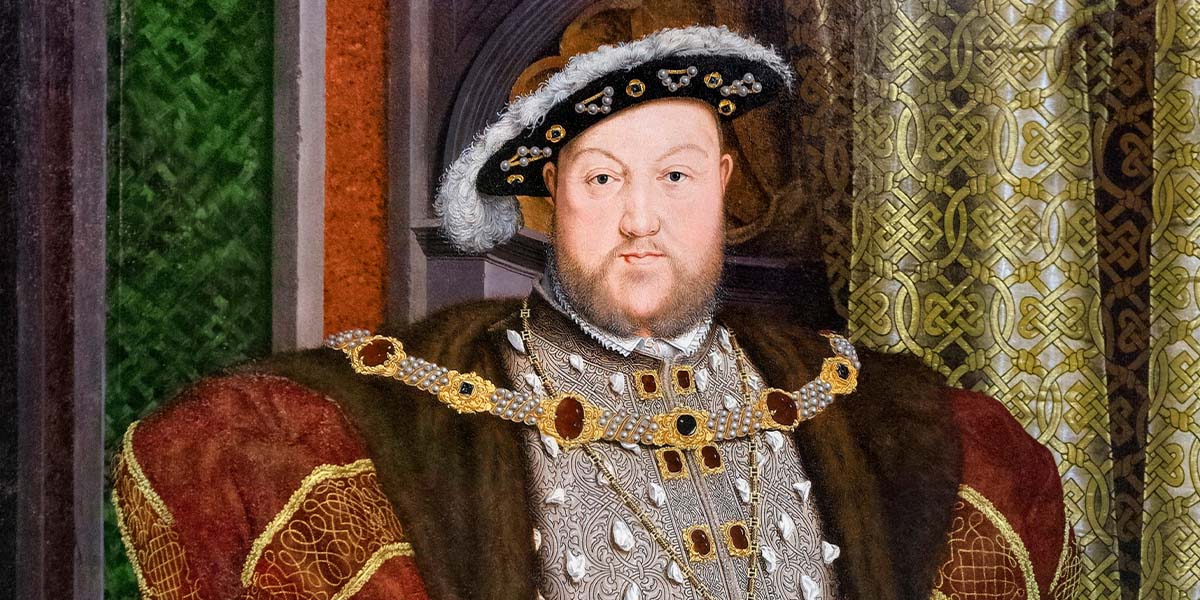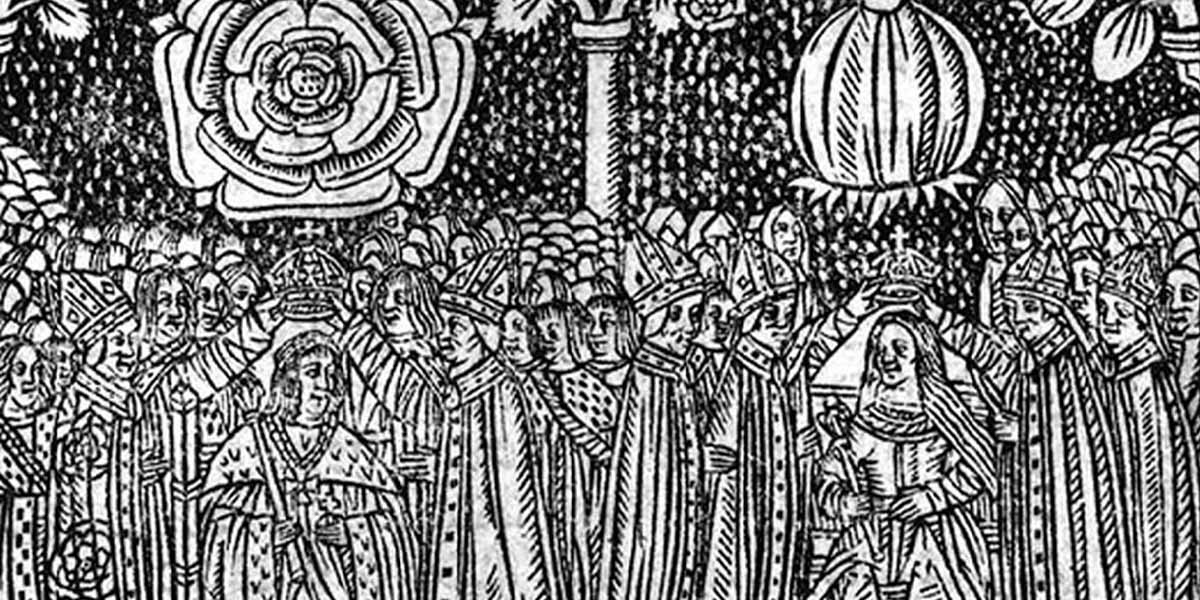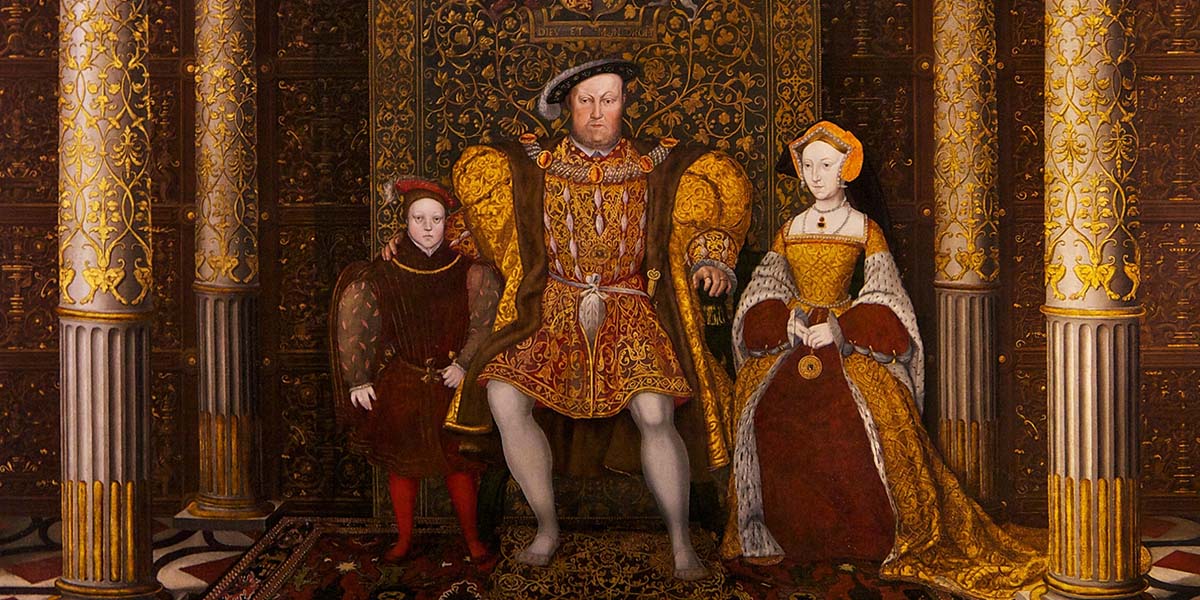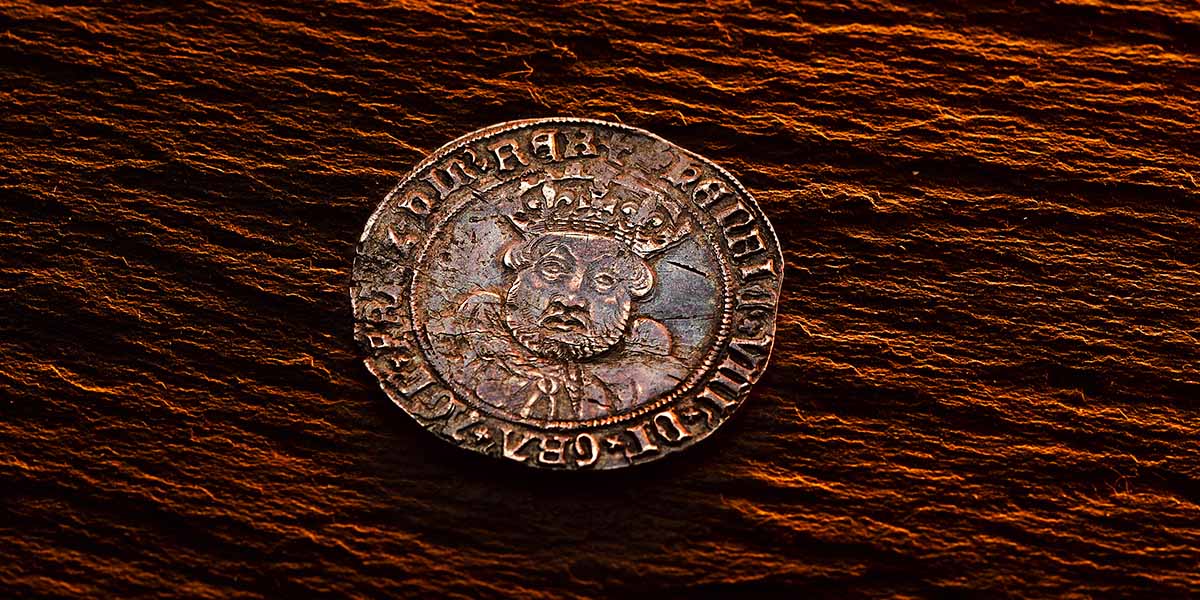Large in stature, appetite and character, Henry VIII is one of the most well-known monarchs in British history. During a reign that lasted almost four decades, some of his actions, such as the Reformation and the dissolution of the monasteries, have helped shape the modern world of today. A dichotomous character who is regarded as both a tyrannical ruler and renaissance prince, his legacy is one that still intrigues historians and the public alike.

Born into a Powerful Dynasty
Henry was born on 28 June 1491, the second son of Henry VII and Elizabeth of York. Throughout his early childhood, he was a high-spirited little boy raised in a predominantly female household. At the age of 11, Henry suddenly transformed from spare to heir to the throne following the death of Prince Arthur, his elder brother. Intent on perpetuating the Tudor bloodline, Henry VII became fiercely protective over his son and insisted upon scrutinising all aspects of his upbringing. Even with the intense pressure resting upon his shoulders as future king, the young Henry earned the description of ‘a golden prince’, as he flourished at various sports and exhibited wonderful creative talents in music and poetry.
Becoming King
Henry VIII became king upon the passing of his father in April 1509. It was the first time in nearly a century that a British adult heir peacefully inherited the throne. Due to his mixed Yorkist and Lancastrian lineage, the monarch represented the dawn of a new era for Britain. The early years of Henry’s reign illustrated his penchant for opulence and grandeur, as well as his lustful tendencies.
As a young boy, Henry had described Katharine of Aragon as ‘a beautiful creature’ to his father. The Spanish princess remained stranded in the country following the death of Henry’s older brother, her husband, and Henry’s first act as king was to marry her. The pair were crowned in a grand coronation ceremony on Midsummer’s Day 1509 and spent the ensuing months attending parties, tournaments and feasts. Wherever he went, Henry insisted on flaunting his fine tastes, with plenty of gold and silver on display.

Yearning for an Heir
Just like his father, Henry VIII was desperate to produce a male heir to perpetuate the Tudor dynasty and ensure political stability and peace for the nation. Fate was cruel to Katherine; she endured a miscarriage early on in the marriage, which would be the first of many more to come. She then gave birth to a son on 1 January 1511; however, the baby died within two months. Plagued by miscarriages and stillbirths, Katherine gave the king a daughter, who would become the future Mary I. With no male heir and the constant pregnancy tragedies, Henry worried he had angered God by marrying his brother’s wife and cursing the marriage. His eyes began to wander, and he soon lusted after a younger woman called Anne Boleyn.
Breaking from Rome
Much to the king’s frustration, it took six years to finalise his divorce from Katherine of Aragon. Her resistance to the divorce meant that Henry needed the Pope’s permission. However, the Holy Roman Emperor Charles V, who happened to be Katherine’s nephew, controlled the Pope, which rendered negotiations fruitless. This prompted Henry to take matters into his own hands and declare independence from Rome. He then branded his marriage to Katherine as invalid due to her previous relationship with his brother. It was declared ‘null and void’ by the Archbishop of Canterbury in May 1533, although Henry had already married Anne Boleyn in secret in the January of that year. The Act of Supremacy was introduced the following year, which declared Henry the ‘Supreme Head of the Church of England’.

Acquiring Immense Wealth and Riches
Despite his excommunication by the Pope, Henry regarded himself as God’s representative on earth and proceeded with dissolving the Catholic Church in England. In a four-year campaign between 1536 and 1540, Henry shut down or destroyed over 800 monasteries, seizing a vast amount of wealth and property in the process. The construction of Hampton Court Palace, which became one of Henry’s favourite residences, served as a physical embodiment of the king’s wealth and power. He also invested money into the nation’s navy and dockyards, science and the arts, and both central and local government.
Further Marriages
Henry’s marriage to Anne Boleyn ended with her execution, which was triggered by rumours spread of her adultery. Like Katherine before her, Anne failed to give Henry a male heir. Just ten days following Anne’s beheading at the Tower of London, Henry married his third wife, Jane Seymour. She provided the king with his desperately sought-after heir, who would later become Edward VI. The birth of a son came with a price, as Jane died from post-natal complications. His next marriage was fuelled by a desire for more male heirs and, spying an opportunity to create a politically advantageous marriage, the king’s chief minister convinced him to marry the German princess, Anne of Cleves. However, the union wasn’t welcomed by Henry, who declared ‘I like her not’. He bought off the passive princess and chose one of her ladies-in-waiting, Catherine Howard, as his next wife. Henry was infatuated by Catherine but, less than eighteen months after the wedding, he was incensed when he was told Catherine had been unfaithful. Filled with vitriolic rage, he ordered her to be executed at the Tower of London on 13 February 1542. Henry’s final wife, and the only one who wasn’t cast aside by the king, was Katherine Parr.

The Great Debasement
Influenced by British monarchs of old, such as Henry V and Richard the Lionheart, Henry VIII believed in leading the nation to war against enemies of old, especially France. Henry’s headstrong and tyrannical nature meant he was unfazed by the cost of his wars and campaigns, which were unsurprisingly expensive. To fund these endeavours in his later years, Henry exploited the nation’s coinage in an act known as the Great Debasement, something which had never been seen before and has not happened since. Debasing the coinage involved mixing common metal with precious metals such as silver or gold, whilst maintaining the coin’s face value. Silver coins were badly affected; the fine layer of silver that was applied to the surface of debased coins eventually became so thin that the silver would wear down to reveal the copper-coloured debased metal underneath. This happened most commonly on the king’s nose on his portrait, earning him the somewhat unsavoury nickname ‘Old Coppernose’.




